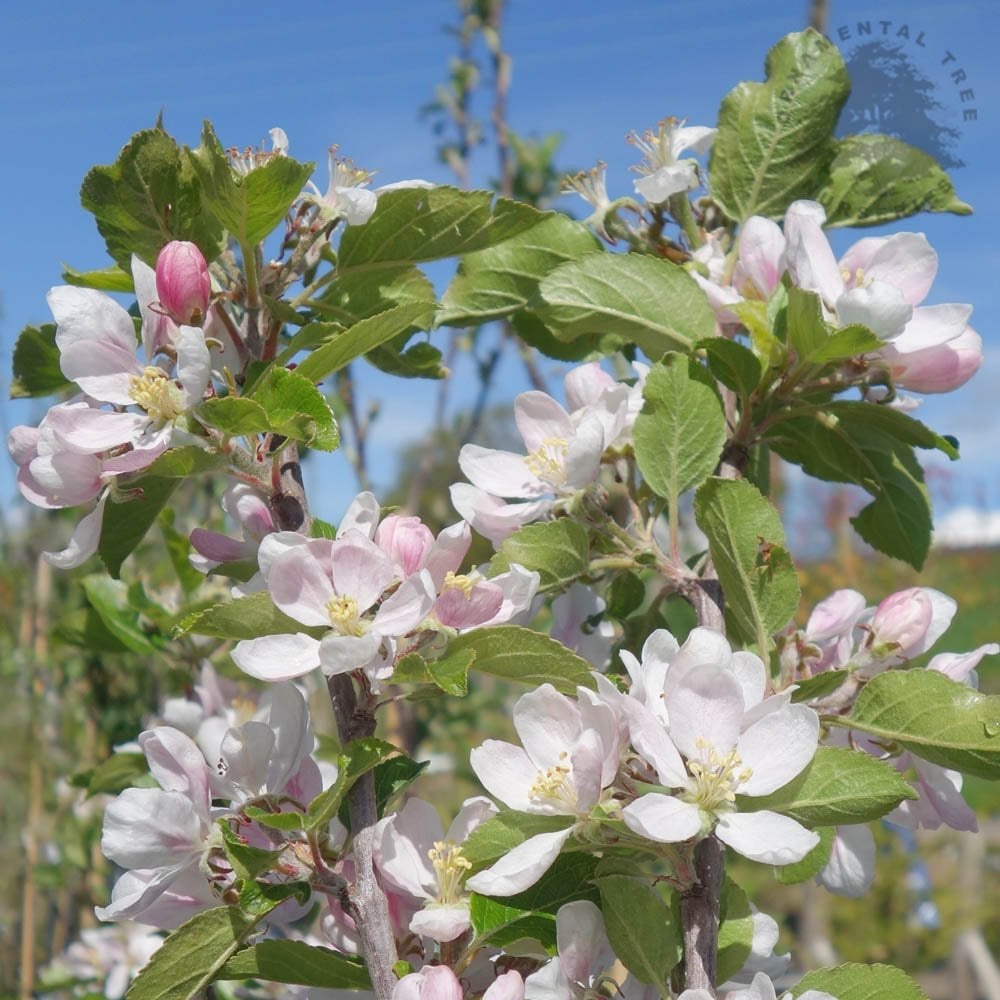Sunset Apple Tree
Sunset Apple Tree
Eating Apple Trees

Sunset Apple Tree
Eating Apple Trees
Key features





Description
Sunset apple trees are a popular eating apple variety that are often chosen as an easier to grow alternative to the tricky 'Cox's Orange Pippin'. The sweet flavour of Sunset is indeed very similar and the apples have orange and red flushed skin with crisp, aromatic flesh.
Expect heavy crops of apples in September, but to encourage larger apples it can be beneficial to thin out fruits earlier in the year. Malus domestica 'Sunset' apple trees originate from Kent in 1918 and require a pollinator apple tree in group A, B or C.
| Small shrubs (1-3) | Young trees & 4+ small shrubs | Select semi-mature trees & shrubs (1-4) | All other mature trees (any quantity) | |
|---|---|---|---|---|
| Mainland UK ex. Scottish Highlands | £10 | £12 | £35 | from £55 |
| Scottish Highlands & the Islands | From £30 | |||
| Outside Mainland UK | Currently we are unable to deliver outside of Mainland UK | |||
Product Details
Key features





Description
Sunset apple trees are a popular eating apple variety that are often chosen as an easier to grow alternative to the tricky 'Cox's Orange Pippin'. The sweet flavour of Sunset is indeed very similar and...
Sunset apple trees are a popular eating apple variety that are often chosen as an easier to grow alternative to the tricky 'Cox's Orange Pippin'. The sweet flavour of Sunset is indeed very similar and the apples have orange and red flushed skin with crisp, aromatic flesh.
Expect heavy crops of apples in September, but to encourage larger apples it can be beneficial to thin out fruits earlier in the year. Malus domestica 'Sunset' apple trees originate from Kent in 1918 and require a pollinator apple tree in group A, B or C.
Planting & Care
Delivery Information
| Small shrubs (1-3) | Young trees & 4+ small shrubs | Select semi-mature trees & shrubs (1-4) | All other mature trees (any quantity) | |
|---|---|---|---|---|
| Mainland UK ex. Scottish Highlands | £10 | £12 | £35 | from £55 |
| Scottish Highlands & the Islands | From £30 | |||
| Outside Mainland UK | Currently we are unable to deliver outside of Mainland UK | |||
MORE TO GROW YOUR GARDEN


























